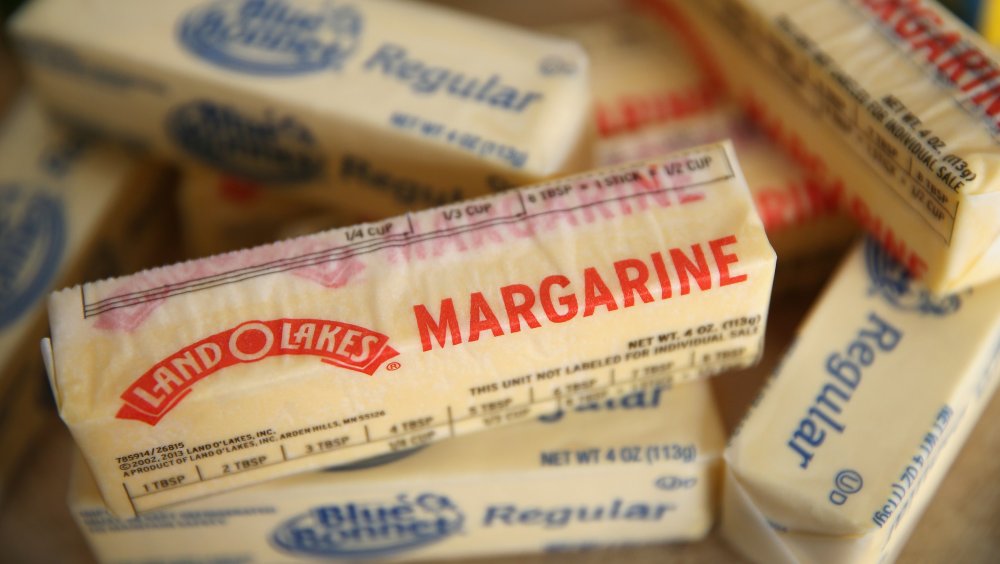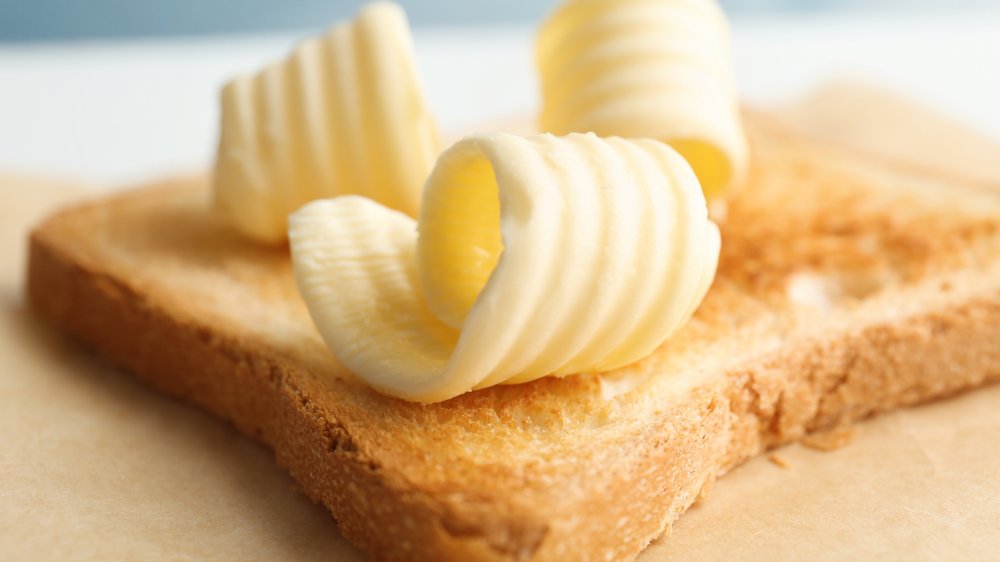The Fascinating Reason Margarine Used To Be Pink
Butter and human mouths go together like bread and — see that? You can't even complete that classic phrase without butter. That's how fundamental it is to the human experience. By the dawn of civilization, it had already risen to an almost divine status. Author Elaine Khosrova told NPR that in the earliest civilizations, the transformation from milk into butter was an udder mystery — one so filled with magic that the Sumerians of ancient Mesopotamia made offerings of butter to the fertility goddess Inanna. Butter wouldn't be the food of the gods forever, however.
1869 saw the rise of what dairy farmers derided as a false idol: margarine. Smithsonian Magazine notes that the brand new butter substitute was affordable for consumers at a time when dairy prices were spiking in France. Margarine and its attractive price tag spread to the United States in 1870 "to the universal horror of American dairy farmers," as writer Rebecca Rupp put it. Within a decade, 37 margarine companies had formed. Rather than crying over spilled milk, the dairy lobby began decrying margarine — and even managed to turn it pink.
Marginalizing margarine
Butter producers did their level best to smear margarine — and not on bread. They portrayed the spread as an unvetted threat to people's health and questioned the origin of the oils used to produce it. The margarine alarmism prompted lawmakers to pass the 1886 Margarine Act, which hit margarine makers with tariffs and fees. Margarine was banned altogether in the states of Pennsylvania, Maine, Michigan, Ohio, and the dairy mecca that is Wisconsin. In a fiery rebuke of butter's rival, Wisconsin Senator Joseph Quarles declared, "I want butter that has the natural aroma of life and health. I decline to accept as a substitute caul fat, matured under the chill of death, blended with vegetable oils and flavored by chemical tricks."
Political cartoons depicted paint, soap, rubber boots, arsenic, and even stray cats being used as ingredients for margarine. In a bit of visual irony, dairy lobbyists tried to make people see butter through rose-colored glasses by turning margarine pink. The state of New Hampshire required companies to dye their margarine pink under penalty of a $100 fine or 60 days in the slammer. However, the Supreme Court slammed that law in 1898, ruling that the color unfairly rendered margarine "unsalable" by making it look gross to customers. Dairy farmers probably had a cow.

